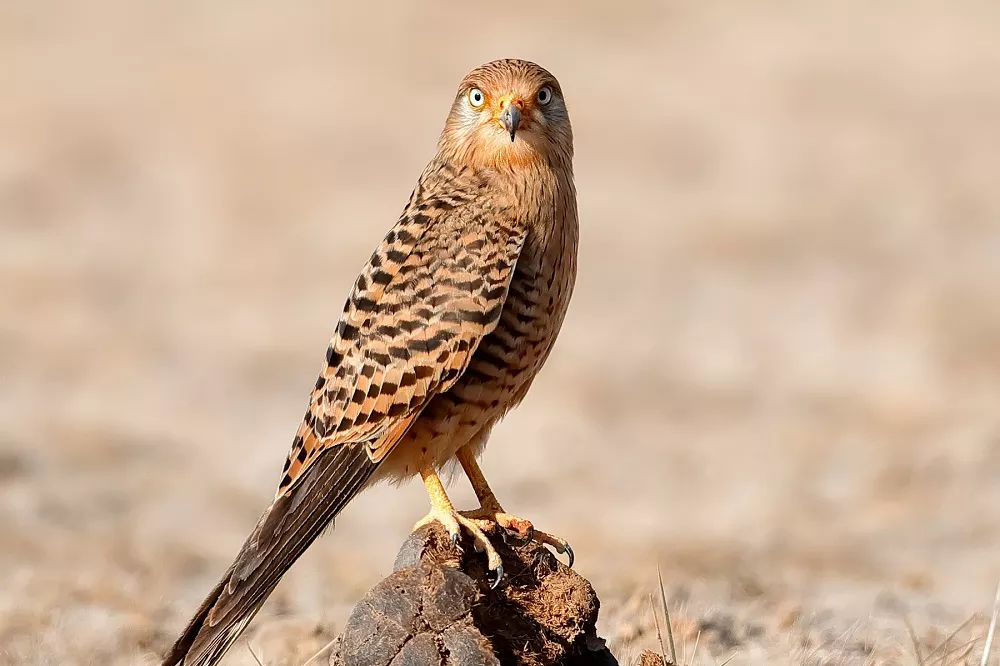Hawks and falcons are majestic birds of prey that evoke awe and admiration. With their sharp eyes, powerful flight, and hunting prowess, they dominate the skies. While these raptors share similarities, they also exhibit distinct characteristics that set them apart. In this article, we delve into the differences between hawks and falcons, shedding light on their unique attributes, behavior, and hunting strategies.
Physical Characteristics:
-
Size and Shape:
Hawks and falcons vary in size and body structure. Hawks, generally, are larger and bulkier compared to falcons. They possess broader wings, designed for soaring and sustained flight. Falcons, on the other hand, tend to have a more streamlined body and narrower wings, allowing them to achieve remarkable speeds during hunting dives.
-
Beak and Talons:
The shape of the beak and talons provides insight into the hunting techniques employed by hawks and falcons. Hawks have strong, hooked beaks and robust talons, adapted for grasping and capturing prey on the ground or in trees. Falcons, with their tapered beaks and sharp, curved talons, are built for a more specialized hunting strategy, which involves high-speed aerial pursuits and mid-air strikes.
Flight Characteristics:
-
Flight Style:
Hawks are renowned for their soaring flight. They utilize thermals, rising columns of warm air, to effortlessly glide and conserve energy as they search for prey. Hawks employ patience and observation, scanning the landscape for potential targets from their elevated vantage points.
Falcons, on the other hand, are known for their exceptional aerial agility and speed. They engage in high-speed pursuits, utilizing swift wing beats and rapid changes in direction to chase down their prey. Falcons are renowned for their ability to stoop or dive at incredible speeds, striking their targets with astonishing precision.
Hunting Techniques:
-
Hunting Strategy:
Hawks predominantly rely on perching and patiently scanning their surroundings for prey. Once a potential target is spotted, they employ a sit-and-wait approach, swooping down to capture their prey either on the ground or in trees. Hawks are skilled at hunting small mammals, birds, reptiles, and even insects.
Falcons, on the other hand, are renowned for their aerial hunting prowess. They excel in high-speed pursuits, chasing down birds in mid-air. Falcons are incredibly agile, utilizing their speed and maneuverability to catch their prey during dramatic stoops or dives. They primarily target other birds, including small songbirds, waterfowl, and pigeons.
Behavioral and Habitat Differences:
-
Nesting Habits:
Hawks typically construct large stick nests in trees or on cliffs, creating sturdy structures to accommodate their size. They tend to reuse and expand their nests over multiple breeding seasons.
Falcons, in contrast, are cavity nesters. They seek out protected spaces such as cliffs, abandoned buildings, or nest boxes to lay their eggs. Falcons do not build elaborate nests but instead line the chosen cavity with feathers and other soft materials.
-
Habitat
Hawks and falcons have adapted to different habitats, which has influenced their physical characteristics and behavior. Hawks can be found in a wide range of environments, including forests, grasslands, and deserts. Some species, such as the red-shouldered hawk, prefer woodland areas, while others, like the prairie falcon, live in open grasslands.
Falcons, on the other hand, prefer open habitats, such as deserts, grasslands, and mountains. They are known for their ability to fly at high altitudes, and some species, such as the peregrine falcon, have been recorded flying at speeds of up to 240 miles per hour. Falcons also adapt well to urban environments and are commonly found in cities and towns.
Conclusion:
While hawks and falcons share a common classification as birds of prey, their differences in physical characteristics, flight styles, hunting techniques, and behavior highlight their unique adaptations and strategies. Hawks utilize soaring flight, robust talons, and patient perching to secure their prey, while falcons excel in high-speed pursuits, utilizing streamlined bodies and sharp beaks to capture prey in mid-air.
Understanding the distinctions between hawks and falcons deepens our appreciation for the diverse adaptations and hunting strategies found within the raptor family. These majestic birds continue to awe us with their grace, power, and ability to thrive in various habitats across the globe.


 Facebook
Facebook  Instagram
Instagram  Youtube
Youtube 